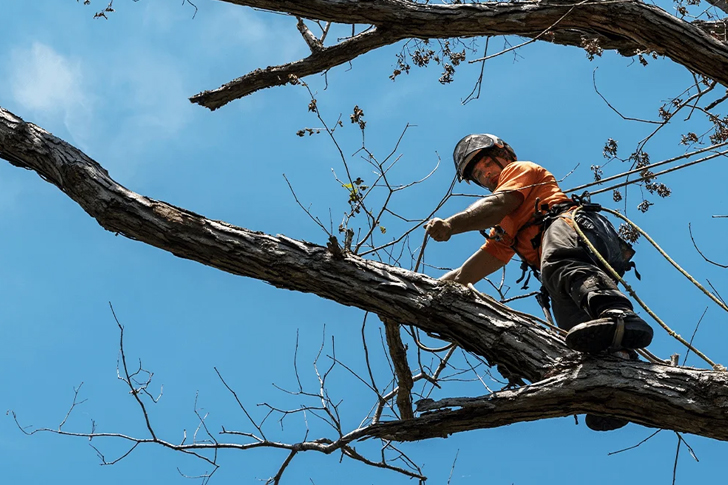Navigating the Costs of Tree Removal Services
Removing a tree can be a necessary but costly service, whether it’s due to storm damage, disease, or landscaping plans. The costs can vary widely depending on the size of the tree, its location, and the complexity of the job. However, there are several strategies to manage these costs effectively without compromising on safety or quality. This guide offers insights into obtaining tree removal services economically, focusing on understanding the factors that influence cost and how to navigate them smartly.

Understanding Tree Removal Costs
The cost of tree removal services can range from $150 for small trees to over $2,000 for large trees, with the national average around $750. Factors influencing the cost include the tree’s height, diameter, condition, and location. Trees that are large, unhealthy, or located near buildings or power lines are typically more expensive to remove due to the increased risk and labor involved.
Step 1: Assess the Situation
Before seeking quotes, assess the tree and its surroundings. Understand the tree’s size, type, and condition, and consider any obstacles that might complicate the removal process, such as nearby structures or overhead wires. This assessment will help you understand the quotes you receive and ensure they are reasonable for the work required.
Step 2: Get Multiple Estimates
It’s advisable to get estimates from several tree removal services to compare prices and gauge the average cost. Be wary of quotes that are significantly lower than others as they might exclude necessary services like stump removal or might not carry adequate insurance.
Step 3: Check Credentials and Insurance
Choose a tree removal service that is licensed and insured. This protects you from liability in case of accidents or damage to your property. Verify the company’s credentials and ensure they have both liability insurance and workers’ compensation insurance.
Step 4: Opt for Off-Season Services
The demand for tree removal services varies seasonally. Prices can be lower during the winter months when demand is typically lower. If the tree removal is not urgent, scheduling the service during the off-season can result in better rates.
Step 5: Bundle Services
If you have multiple trees that need attention, or if neighbors also require tree services, consider bundling these jobs together. Tree removal companies often offer discounts for larger jobs or multiple trees because it maximizes their efficiency and use of equipment.
Step 6: Salvage Wood Value
In some cases, the wood from the removed tree can be valuable. If your tree is a desirable hardwood, companies might reduce the cost in exchange for keeping the wood. Discuss this option with the service provider before the job begins.
Step 7: Discuss Stump Removal Options
Stump removal is often not included in the tree removal quote and can require significant additional cost. Decide in advance if you need the stump removed and discuss this with the tree removal service as part of the initial quote. Alternatively, consider leaving the stump if it’s not an obstruction, or explore less expensive methods like grinding or chemical treatments.
Step 8: Leverage Local Government Resources
In some areas, local governments offer services or financial assistance for tree removal, especially if the tree poses a risk to public safety or is part of a city management program. Contact your local government to inquire about any such programs.
Conclusion
Obtaining economical tree removal services requires a blend of careful planning, thorough research, and strategic decision-making. By understanding the scope of the work, assessing multiple service providers, and exploring all possible options, you can manage the costs effectively while ensuring the job is done safely and efficiently.







Recent Comments